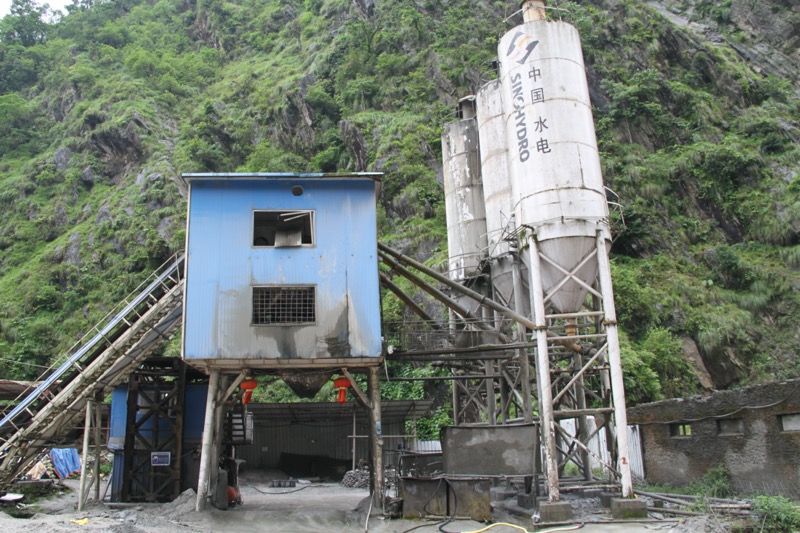After the 2014 climate agreement between President Xi Jinping and President Barack Obama alongside the consequent ratification of the Paris Agreement, China sees itself as taking a leadership role in global climate action and governance.
Against this background, China has utilized green finance as a major strategy in supporting a low carbon transition. In doing so, China has become one of the world’s largest markets for green finance and has become the world’s largest investor in renewable energy. At the same time, the Chinese financial system is also the source of more than half of global coal financing. To overcome this dichotomy, green finance needs to move from a niche to green the financial system as a whole. Although such an integrated approach and strategy for the financial system is still lacking in China, there is much other developing countries can learn from China’s transition to a low carbon economy. This is timely as China continues to support climate bilateralism and Environmental South-South Cooperation in the Belt and Road Initiative (BRI).
Why should Nepal green its financial system?
There is an immediate need for Nepal to green its financial system amidst the backdrop of increasing climate vulnerability and the need for all countries to reduce their carbon emissions.
First, Nepal’s financial system is dominated by banks with most of their assets invested in brown sectors such as agriculture, construction, and real estate. This continues to expose the financial system to high environmental and climate risks. According to the 2020 Global Climate Vulnerability Index, Nepal is ranked as the 9th most vulnerable country to climate change in the world. Furthermore, Nepalese banks have limited knowledge on environmental risk calculations, making their investments highly risky. Therefore, Nepal needs to increase the resiliency of its economic and financial system not just by incorporating long-term environmental and climate risks, but also by safeguarding current investments by innovating green insurance schemes.
Second, Nepal is yet to acknowledge the business case of green finance and utilize private sector investments. Presently, the Nepalese government has a framework to catalyze public financing into climate change in the broader context of economic development and government fiscal planning process. However, greening the financial system would provide the much-needed incentives for increased private sector investments in green sectors such as renewable energy. This would also diversify the portfolio of banks and reduce risks accordingly. According to a study from the International Finance Corporation (IFC), this would open up an investment potential of US$46.1 billion by 2030, which the private sector, including the MDBs, local and regional financial institutions can tap into (see figure 1).
Finally, there is a strong political case for Nepal to green its financial system. The devastating earthquake of 2015 followed by the economic blockade crisis highlighted the need for Nepal to reduce its energy dependency abroad. In 2017, Kathmandu was listed as the 7th most polluted city in the world. This has resulted in an increased socio-economic cost with citizens increasingly getting frustrated with the government. This means Nepal needs to think long-term, realize its potential in hydropower and renewable energy generation, and demonstrate the financial benefits of investing in green projects.
Recommendations: How can China help Nepal green its financial system?
According to the Sustainable Banking Network, Nepal is making progress in developing its green finance system and has evolved from the “Preparation” stage to the “Implementation” stage in recent years (see figure 2). The guiding force behind this has been the adoption of the “Guidelines on Environmental and Social Risk Management for Banks and Financial Institutions” by the central bank of Nepal in 2018. In contrast, China is regarded as a first mover among its peers in the SBN.

Strategic Alignment, Climate and Green Finance, and ESG Integration are the three pillars set forth by the Sustainable Banking Network. Nepal has particular room for improvement in strategic alignment alongside the Climate and Green Finance.
Within strategic alignment, Nepal’s current framework involves interagency collaboration between financial supervisors/regulators, industry associations and Financial Institutions (FIs). However, this collaboration does not include other public agencies such as environmental agencies and ministries alongside representatives of civil society such as NGOs, associations, and media.
- Accordingly, Nepal can build a Green Finance Task Force, similar to China’s Green Finance Task Group. The Task Force invites experts from ministries, financial regulators, academics, banks and other financial institutions, and is complemented by international experts. In China, the task force was set up in 2014 to help the central government identify barriers and opportunities in green finance, and to make concrete recommendations on green finance policies. Their recommendations formed a key part of the 2016 “Guidelines for Establishing the Green Financial System” policy document, which sparked a rapid green finance development in China. For Nepal, it makes sense to establish a similar task force bringing together experts from all across the industry to design a green financial system that is right from Nepal.
- It is also of foremost importance for Nepal to step up its climate and green investment reporting alongside the measurement of environmental benefits and climate risk exposure. Presently, Nepal requires FIs to report on climate/green finance flows alongside them to report publicly on their green finance activities. However, the framework does not require FIs to report on climate risk exposure on the portfolio level. Nor does it make E&S policies, practices, and results externally verified through assurances and independent reviews. Nepal also does not require FIs to calculate the environmental benefits of their investments, nor does it require any climate risk exposure assessment. Along with a systematic update of Nepal’s framework, there is much space for capacity building within Nepalese banks in climate risk exposure methodologies such as climate scenario analysis and climate risk stress testing. This is because banks play a key role in “assessing risks, originating loans, and underwriting the issuance of equities and debts.”
- Nepal’s membership within the Sustainable Banking Network provides access to international and Chinese green finance experts. Nepalese financial institutions, academic institutions, banks and NGOs can benefit from direct technical assistance from China and the rest of the world. Key organizations include IFC, the World Bank, and leading universities. Furthermore, a bilateral channel between China and Nepal can play a key role in knowledge transfer and capacity building for Nepal to learn the lessons acquired in China’s experience in green finance. An initiative of particular potential in this regard is the Green Finance Leadership Program for the Belt and Road Initiative led by Tsinghua University. The program focuses on technical assistance on green finance from Chinese to developing country financial system regulators.
These recommendations will only lay the groundwork for Nepal to continue greening the financial system. It is important to acknowledge that greening the financial system is a long and complex process and requires specialized investment vehicles, fiscal and financial support, financial infrastructure, as well as the necessary legal infrastructure moving forward. This also requires greening the capital and insurance markets, innovate capacity building with Nepal’s financial structure and identify the low hanging fruits in green finance. In this backdrop, learning from China in greening the financial system can provide many benefits to Nepal.






Comments are closed.